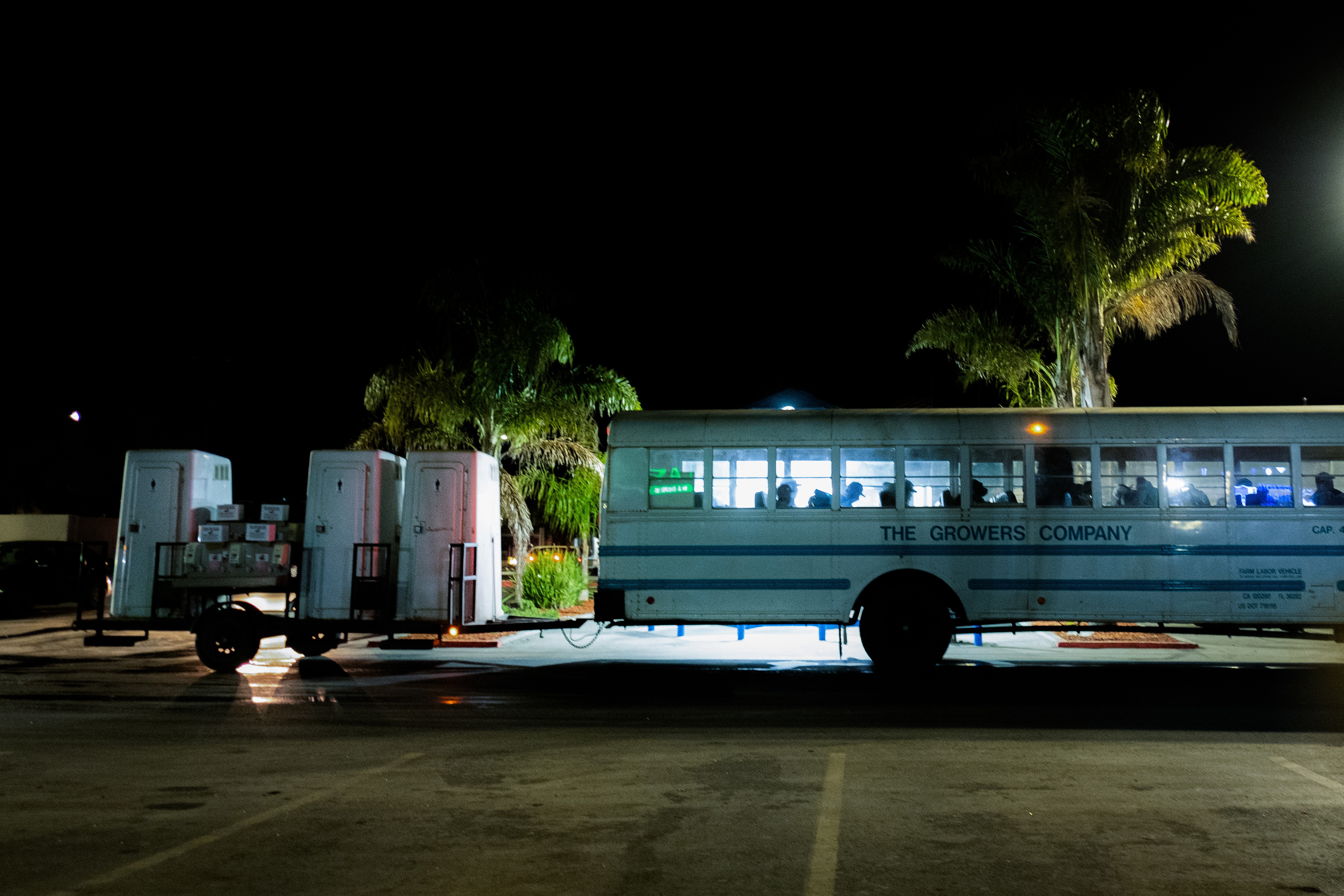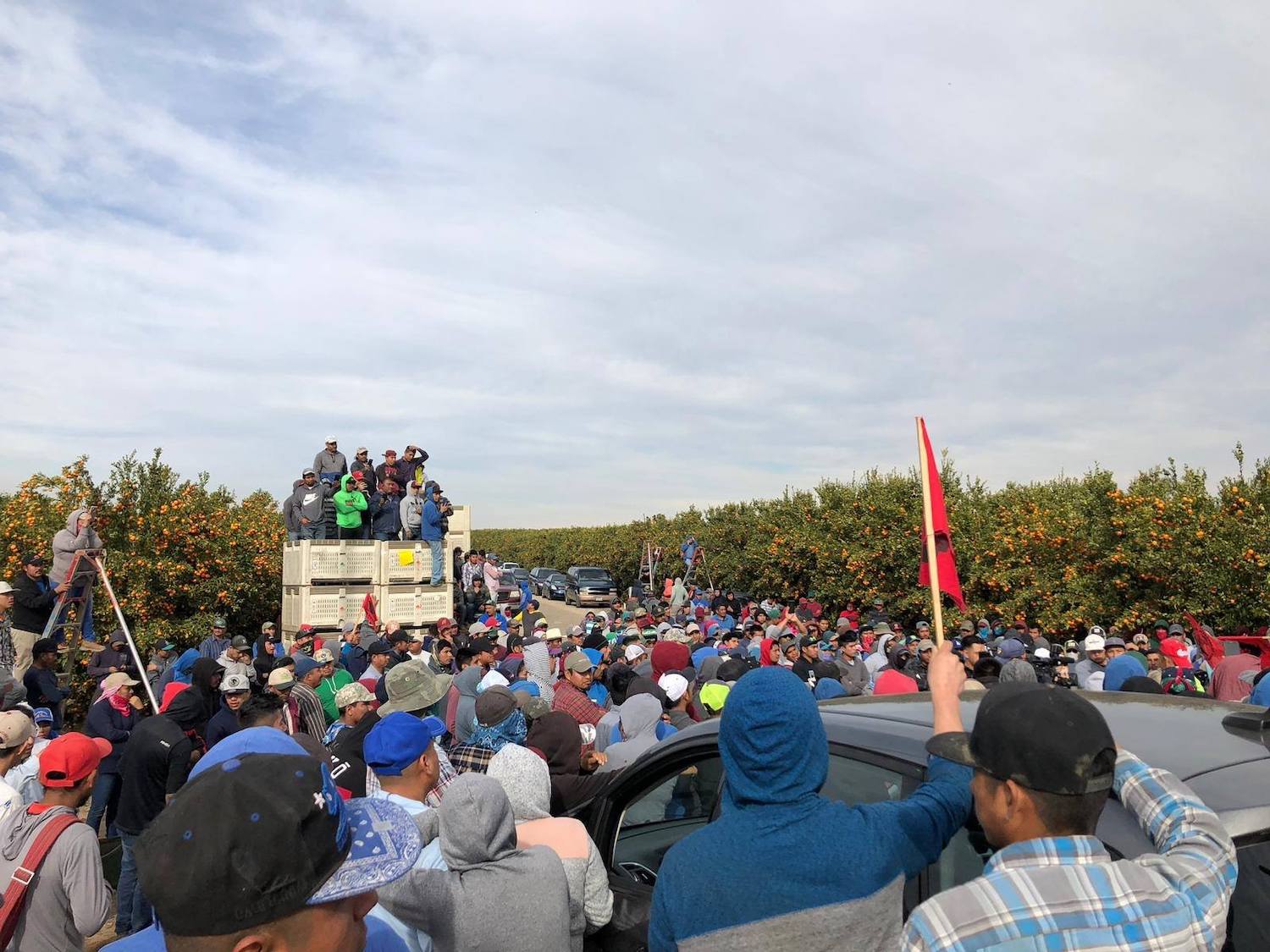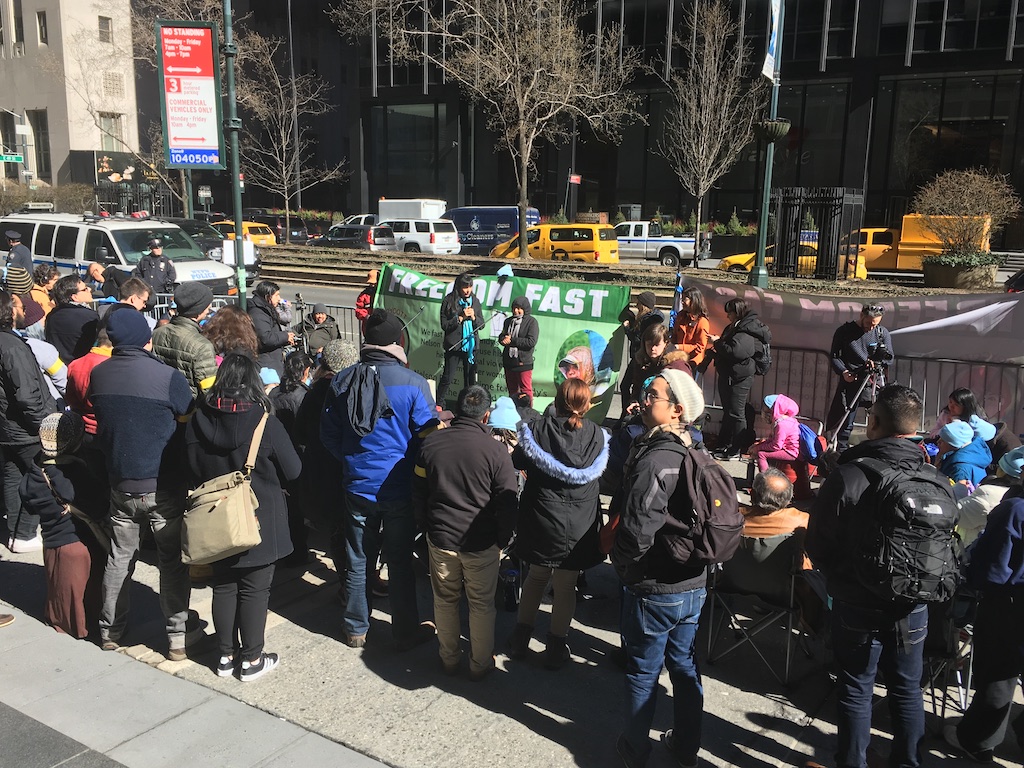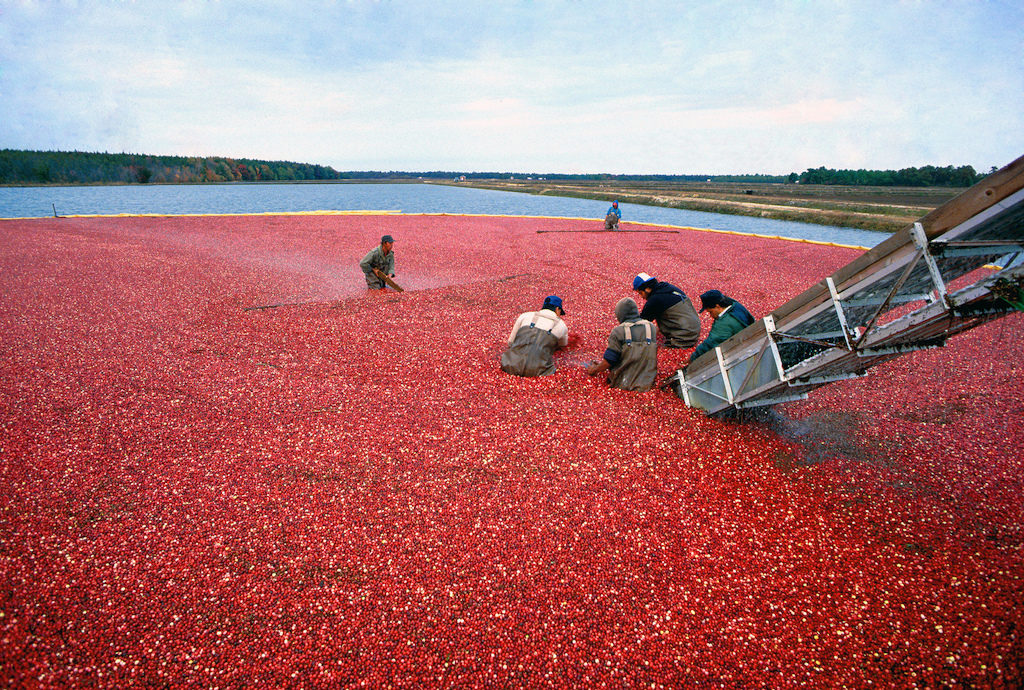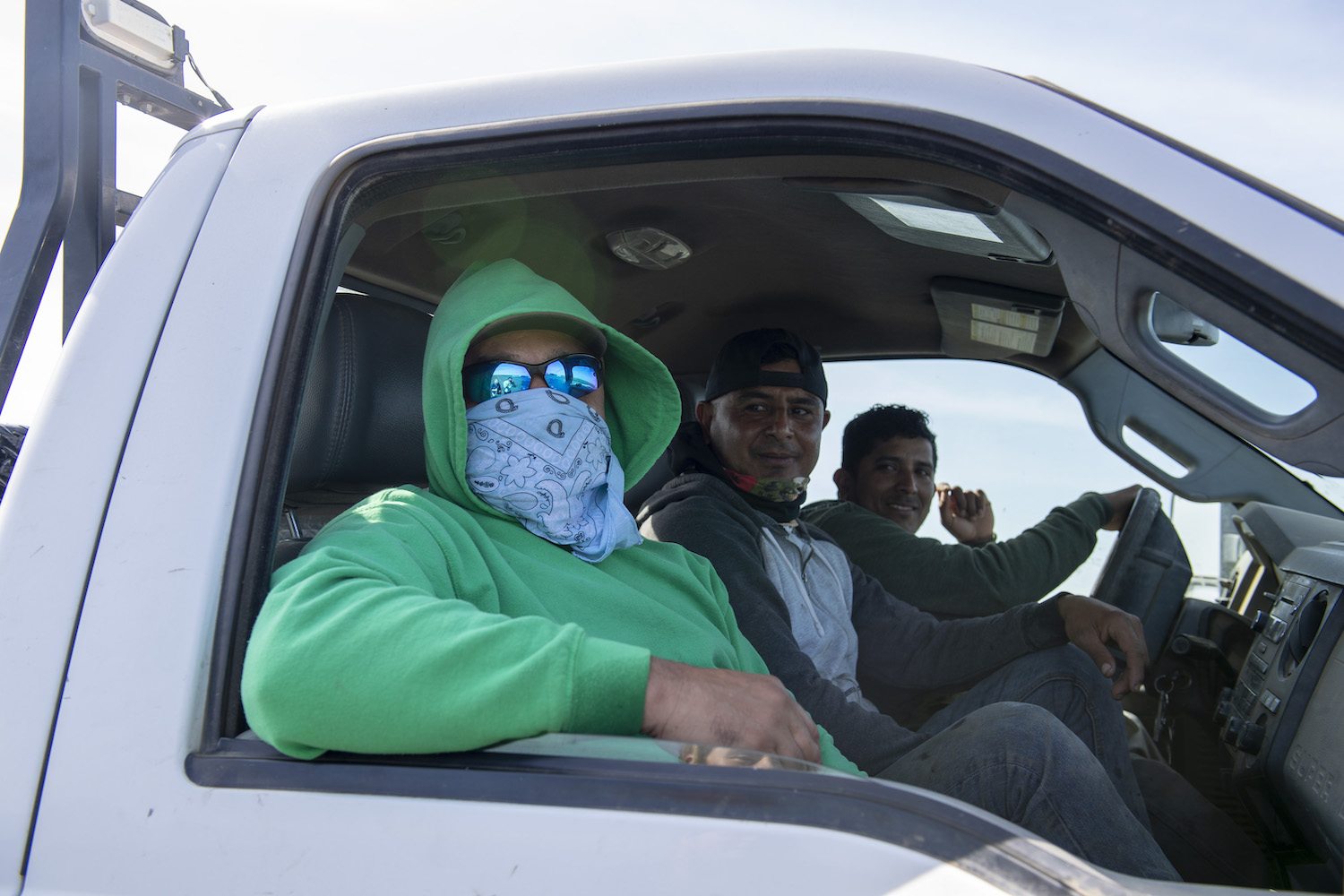
David Rodriguez/The Salinas Californian
Masks shield them from pesticides and field dust, which cause respiratory problems. And as California enters fungicide season, soon followed by fire season, growers and laborers worry there won’t be enough masks due to the coronavirus.
In the photo above, Juan Manuel Virgen, left, and Daniel Lopez Avilez, middle, sit inside a pickup truck as they talk about the difficulties they face when trying to find respiratory protection. March 04, 2020.
Salinas farmworkers Juan Manuel Virgen and Daniel Lopez Aviles circled the field in a white pickup, a coworker behind the wheel. It was about 10 a.m., and the sun was starting to warm the air. All of them had tied bandannas neatly around their necks, tucking them into the front of their shirts.
“No hay mascarillas de momento,” said Virgen.
They couldn’t find face masks, Virgen said, so they made do.
This story originally appeared in CalMatters, an independent public interest journalism venture covering California state politics and government. This article is part of The California Divide, a collaboration among newsrooms examining income inequity and economic survival in California.
Face masks have flown off the shelves around the United States amid the coronavirus outbreak, even though experts have advised people against wearing them unless they are sick.
That has triggered a shortage for farmworkers like Virgen and Aviles, who work for a farm labor contractor in the Salinas Valley, a region that produces much of the nation’s fresh produce, including almost two-thirds of its leafy greens.
The two workers said their employer ran out of masks weeks ago for everyone except those applying pesticides, and even those are scarce, according to growers and farm labor contractors.
“We surveyed our board members and the ones doing well are the ones who stocked up before this.”
Masks protect farmworkers from inhaling pesticides or field dust, which can trigger asthma attacks and other serious respiratory problems. And as California enters fungicide season, soon followed by fire season, growers, farm labor contractors, farm laborers and their advocates worry there won’t be enough masks to allow farmworkers to apply certain pesticides or protect them from ash and smoke.
More than 90,000 farmworkers like Virgen and Aviles plant, harvest and pack fruits and vegetables in the Salinas and Pajaro valleys.
Valley Fever, wildfires and asthma
Employees at ACE Hardware and Home Depot said people are buying face masks as fast as they can, whether they are medical-grade N95 respirators designed to filter out small particles or just dust masks, which serve no medical purpose.
And wholesale isn’t much better.
Guadalupe Sandoval, executive director for the Farm Labor Contractors Association in Sacramento, said farm labor contractors have reported difficulty finding N95 and dust masks.
“We surveyed our board members and the ones doing well are the ones who stocked up before this,” said Sandoval. “Now, they’re scarce. The supply chain isn’t keeping up with the demand.”
Right around now is the time growers typically start applying fungicides; the shortage could push growers to reconsider what types of fungicides they use, as the more dangerous ones require cartridge respirators or N95 masks, Sandoval added.
While most people who inhale the fungus may simply think they have a cold, in others, the effects can last a lifetime, and result in death or amputation.
“A lot of the fungicides by label don’t require masks,” said Sandoval. “If you had a choice between using a low-level pesticide versus a dangerous pesticide that has hazardous fumes and vapors, I think they’d rather go to an even less toxic pesticide that requires no mask at all and that workers would feel comfortable with.”
The mask shortage may leave farmworkers vulnerable to the airborne fungus that causes Valley Fever, Coccidioides immitis. The disease’s symptoms are similar to the flu, including fatigue, shortness of breath, fever and sometimes lethal lung problems.
Unlike the flu, however, Valley Fever attacks the weakest part of the body. While most people who inhale the fungus may simply think they have a cold, in others, the effects can last a lifetime, and result in death or amputation.
“That exposure can trigger an asthma attack, even if it’s not diesel or infectious particles, just plain soil.”
It’s not just Valley Fever. Dr. John Balmes, a professor of medicine at University of California San Francisco, said farmworkers can be bombarded by dust and dirt while sowing, tending, picking and packing produce, and the particles can be dangerous to their health, setting off asthma attacks and irritating airways.
Many field laborers prefer to put on N95 or dust masks when heading out to work in the open, exposed to the elements. According to Balmes, N95 masks protect against vapor particles, such as sulphur, a common fungicide applied by farmworkers, or Coccidioides. Dust masks only protect against larger particles and simply guard against irritation of the throat and airways.
Now, however, many say they have switched to bandannas, which Balmes said offer little-to-no protection.
“That exposure can trigger an asthma attack, even if it’s not diesel or infectious particles, just plain soil,” said Balmes, who also is a professor of environmental sciences at UC Berkeley and a co-investigator on the CHAMACOS study, a long-term research project that investigates the impact of pesticides on children in the Salinas Valley.
‘Working next to ashes’
Because of Valley Fever risk, Cal/OSHA requires employers to provide face masks whenever laborers may disturb dirt.
In 2017 and 2018, the state worker safety agency fined 16 companies collectively more than $240,000 for exposing workers to Valley Fever. In 2019, a Benicia construction company was cited for failing to provide respiratory protection after two of its workers were hospitalized with Valley Fever.
Most farmworkers don’t carry out the kinds of jobs that require protection from moving dirt; only those digging trenches or disking the soil would need masks.
Farmworkers on average earn annual wages of about $17,500, below the poverty line for most California families.
Still, with no masks, some may choose to risk their health rather than miss a paycheck. Farmworkers on average earn annual wages of about $17,500, below the poverty line for most California families.
Farmworker advocates also worry there won’t be enough masks to go around during wildfire season because of the panic over the coronavirus, leaving them vulnerable to inhaling particles and toxic gases in smoke.
If the Air Quality Index for fine particles reaches 150, as is likely during a wildfire, employers are required to provide farmworkers with N95 masks so they can work while wildfires rage.
“The lack of face masks is definitely a concern for farmworkers who oftentimes labor amid wildfires for many reasons,” said United Farm Workers Foundation Communications Specialist Leydy Rangel.
If laborers can’t work, crops worth more than $4 billion a year in Monterey County alone could be ruined.
“Food that’s not harvested in the field rots, so farmworkers have this responsibility to show up to work, even if that means that they’re working next to ashes,” Rangel said.
Rangel reiterated calls made widely in recent weeks that the general public refrain from purchasing masks unless they are medically necessary.
“That is one of the only ways that we have to protect farmworkers from the dangers of working near wildfires,” she said. “Now that the wildfire season is about to begin and that risk is being presented to us that there will be no face masks, it’s definitely concerning.”
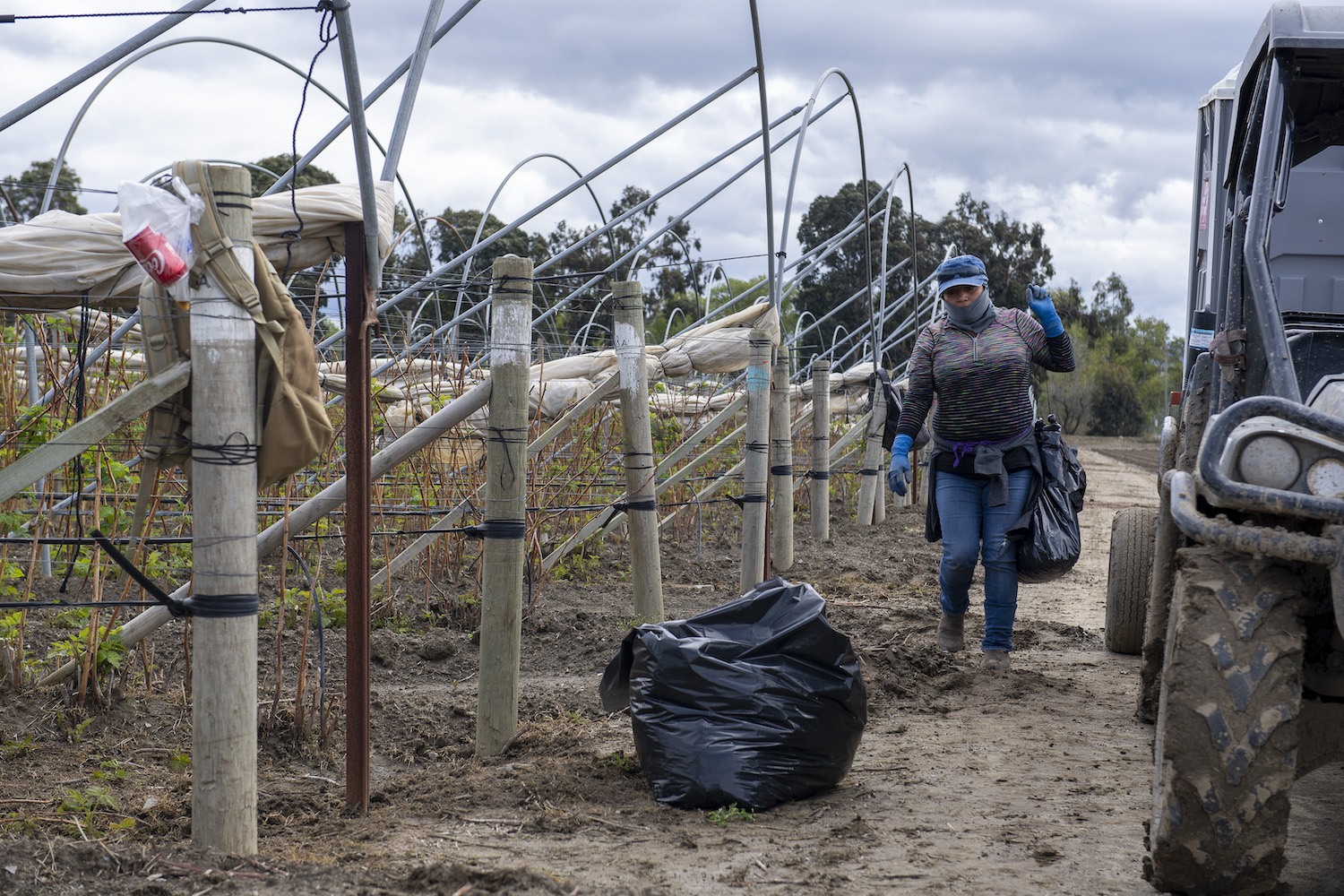
Cruz Santiago carries a bag full of weeds as she wears a face mask she brought from home on March 24, 2020.
Photo by David Rodriguez/The Salinas Californian
Industry rolls out new protections for farmworkers
People older than 60 are especially vulnerable to complications from the coronavirus. And because California’s farmworker population is aging, many fall into that category.
It can take up to two weeks for symptoms of the coronavirus to appear once someone is infected. While masks only prevent a sick person from transmitting the disease to others, it can be difficult to tell if you are sick, experts say.
Medical professionals have asked the public not to use masks if they don’t have to, and anyone ill is being told to stay home. Yet, some who work in agriculture believe it could be useful for farm laborers to use masks while working during the outbreak.
“Given the COVID-19 pandemic, I think it provides ag workers with an extra layer of protection, more than anything.”
“I think in general face masks should be attainable because of food safety reasons,” said Mariana Barrera, the office manager and a managing member at Empire Farm Labor Contractor in Salinas.
Barrera added that healthcare workers should get priority when it came to masks, but farmworkers shouldn’t have to go without. Her company has had a tough time finding sufficient masks, she said.
“Given the COVID-19 pandemic, I think it provides ag workers with an extra layer of protection, more than anything,” she said. “I feel like there’s information that you hear in the media that (masks) will help, some others will say that they don’t, but I think for their safety, it’s important.
“If somebody’s sick then it will help prevent passing it to other people,” Barrera said. “If people are wearing them, I think they’re more help than not.”
“We have instituted enhanced sanitation best practices, broken into smaller teams, added 2-hour shift separation for deep cleaning of common areas, and done detailed team training on how to stay safe and healthy.”
During the coronavirus pandemic, many growers and farm labor contractors have implemented new safety precautions designed to protect workers.
“In our operations, we have taken many steps to keep our teams safe,” said Bruce Taylor, Chairman and CEO of Taylor Farms via email. “We have instituted enhanced sanitation best practices, broken into smaller teams, added 2-hour shift separation for deep cleaning of common areas, and done detailed team training on how to stay safe and healthy.”
At D’Arrigo Brothers, President, CEO and Chairman John D’Arrigo has told all employees not to report to work if they have any symptoms associated with the coronavirus. Employees who have traveled must self-isolate for 14 days before returning to campus as well, he said.
In the fields, additional precautions are being taken. Farmworkers in and around Salinas reported being required to wash their hands a certain amount each day, to leave five or six feet between each other while picking produce or handling farm equipment.
“Everything is cleaner,” Salinas farmworker Cruz Santiago said in Spanish. “The bathrooms are clean, there’s enough soap to wash your hands, there’s enough water.”
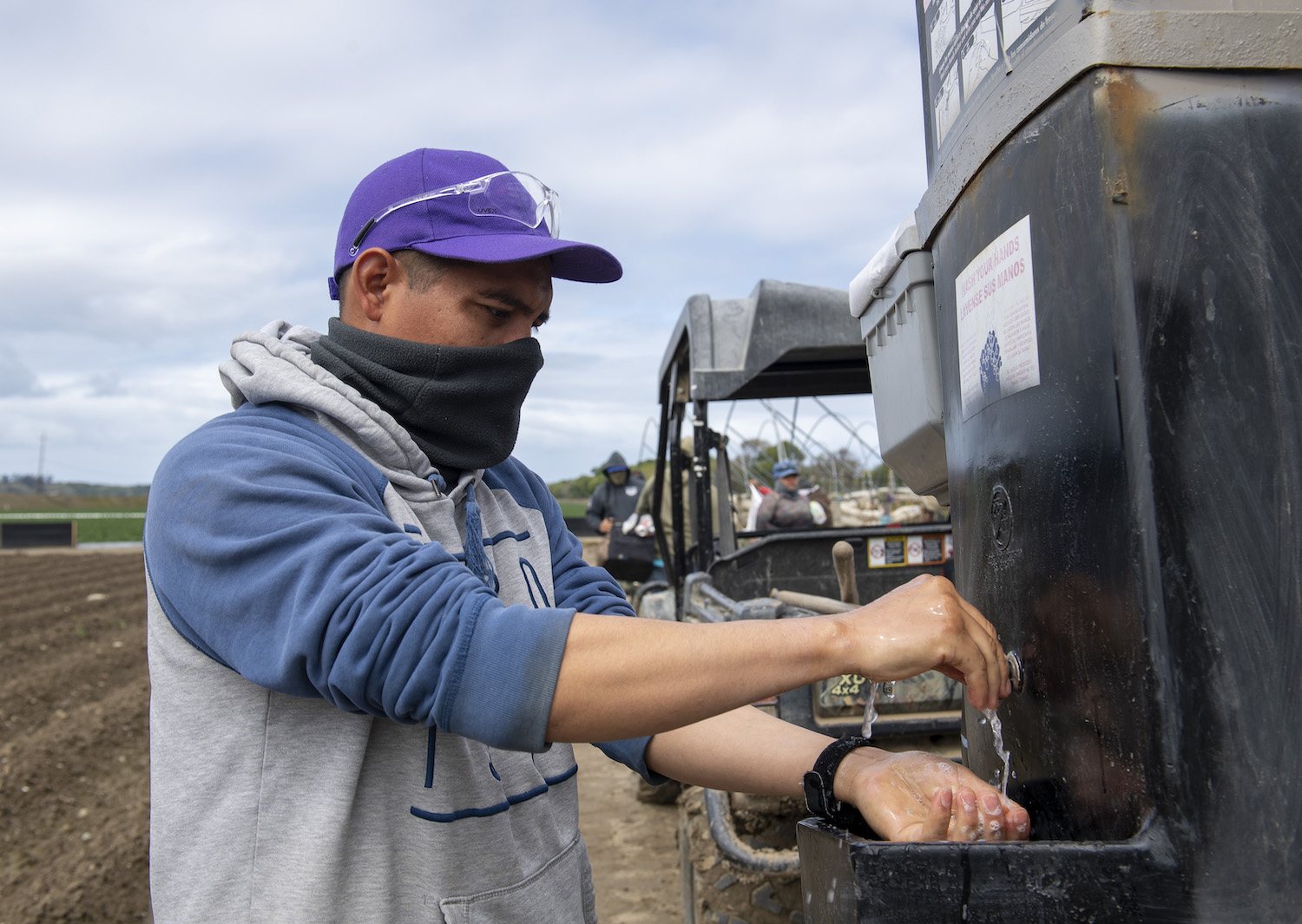
A fieldworker washes his hands as he talks to me about how important it is to wash your hands and wear the right protective gear on March 24, 2020.
David Rodriguez/The Salinas Californian
Fernando Ochoa, a crew boss for Merrill Farms, said he and his workers are required to keep at least six or seven meters between themselves, and must wash their hands seven times a day at least.
In total, nine people work under Ochoa. Many, he said, have been anxious about catching or spreading the coronavirus.
“It’s better for everyone that there’s no contamination,” he said in Spanish. “There are people that don’t take precautions.”
The industry also faces financial uncertainty. For many growers such as D’Arrigo Brothers who sell to supermarkets, business is booming as people stock up on staples in preparation for what could be a long outbreak. Other companies worry they won’t survive the pandemic.
Leticia Villanueva, an owner of V & V Farm Labor Contractors in San Joaquin County, said she was concerned for her seasonal business.
“In January, we had 30 to 50 people working for us, but that was before the virus started being mentioned,” said Villanueva. People began leaving, and now, she said, they have only two people working for them.
“Right now it’s not really affecting us because we’re seasonal, but people are staying home,” said Villanueva. “They don’t want to work. In a month, we’re going to need people to be out on the vineyards, tying and removing parts of the plant by the roots, the stem. If people don’t want to come in, that’s going to affect us.”
David Rodriguez contributed reporting to this article.
Kate Cimini is a multimedia journalist for The Californian. This article is part of the California Divide project, a collaboration among newsrooms examining income inequality and economic survival in California.

